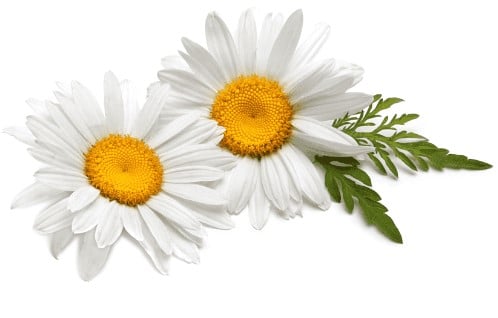

Symptoms of chamomile allergy in dogs include itchiness, redness, and swelling of the skin, as well as excessive licking and chewing of the affected area. Other symptoms may include hives, scabs, and/or hair loss. Dogs may also experience vomiting, diarrhea, and/or difficulty breathing.
Chamomile allergy in dogs is caused by an immune system response to certain substances in chamomile plants, such as essential oils. When these substances come into contact with the skin, respiratory, or digestive systems, they trigger a hypersensitive reaction resulting in the symptoms listed above.
The diagnosis of a chamomile allergy in dogs begins with a physical examination conducted by a veterinarian. During the examination, the vet will look for signs of an adverse reaction such as redness, itchiness, or swelling on the skin, as well as excessive licking or chewing of the affected area. Additionally, the vet may look for symptoms such as hives, scabs, and hair loss. After verifying these signs, the vet may conduct tests such as skin and/or blood tests to confirm the diagnosis. Depending on the results of these tests, further treatment may involve the use of antihistamines and/or a special diet to treat the allergy.
The severity of a chamomile allergy in dogs varies from mild to severe. In severe cases, the allergic reaction can cause anaphylaxis. Anaphylaxis can be life-threatening and, if left untreated, has a mortality rate of about 22%. Therefore, it is essential to get immediate medical attention for your pet if they show any signs of allergy to chamomile.
Treatment of chamomile allergy in dogs often involves the administration of anti-inflammatory medications, such as corticosteroids, as well as topical creams to reduce itching and inflammation. Antihistamines may also be prescribed to reduce the severity of symptoms. In severe cases, dogs may need to be bathed in a hypoallergenic shampoo and receive antibiotic treatment in order to prevent secondary infections from developing. Prophylactic allergen avoidance may also be recommended to minimize the risk of future allergic reactions.
To prevent chamomile allergy in dogs, it is best to avoid contact with chamomile plants and products that contain chamomile. In addition, regularly inspect your dog’s skin for signs of an allergic reaction, and discuss chamomile allergy prevention strategies with your veterinarian. It is also important to bathe your dog regularly and to only use shampoos and other grooming products that are specifically designed for dogs.
Chamomile allergy in dogs is not contagious and is not known to affect humans. However, people with allergies to chamomile may experience similar symptoms if they are exposed to airborne chamomile pollen from plants or products containing this ingredient.
Home remedies that may help manage chamomile allergy in dogs include bathing the affected area in an oatmeal solution, providing a cool compress to the affected area, and administering antihistamines at an appropriate dosage. Additionally, limiting the dog’s exposure to chamomile-based products can help provide relief.
While these home remedies may help manage chamomile allergy in dogs, it is always best to consult a veterinarian for the best personalized treatment plans for your pet.
Dog breeds that are more likely to be prone to chamomile allergies include German Shepherds, Golden Retrievers, Labradors, Bulldogs, Poodles, Shih Tzus, and Chihuahuas. Symptoms of a chamomile allergy in a dog may include itching or rashes around their muzzle or face, gastrointestinal distress, and general skin or respiratory discomfort. It is important to speak to a vet to diagnose and treat the allergy as soon as possible.
Have you ever experienced your dog having an allergic reaction to chamomile? If so, how did your dog respond? How did you feel upon seeing their symptoms and how did you manage the process? Allergies can be difficult to deal with and it’s important to take care of our furry friends. We hope that you and your pup are doing much better and that this allergy does not bother them anymore. Wishing you all the best.